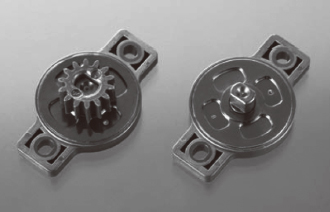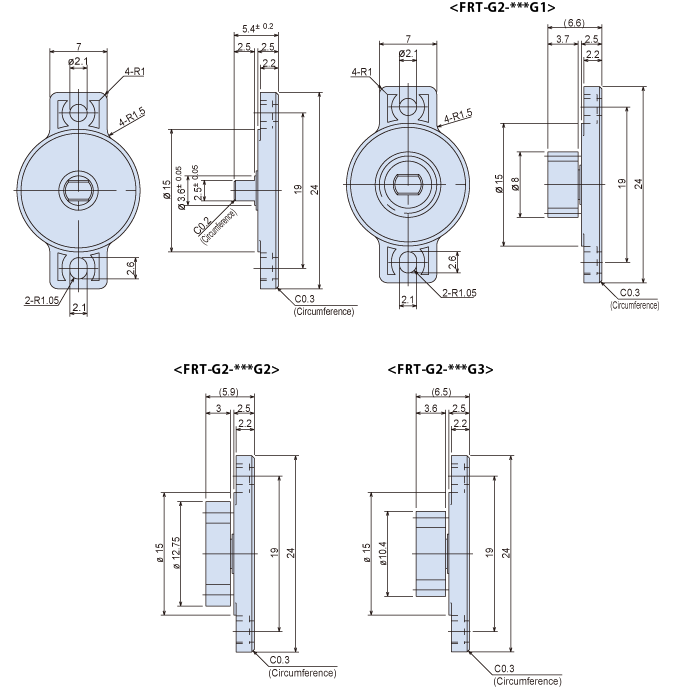

| Model | Rated torque |
|---|---|
| FRT-G2-200(G*) | (2±0.7)X10-3N•m (20±7gf•cm) |
| FRT-G2-300(G*) | (3±0.8)X10-3N•m (30±8gf•cm) |
| FRT-G2-450(G*) | (4.5±1)X10-3N•m (45±10gf•cm) |
| FRT-G2-600(G*) | (6±1.2)X10-3N•m (60±12gf•cm) |
| FRT-G2-101(G*) | (10±2)X10-3N•m (100±20gf•cm) |
Note 1) Rated torque measured at a rotation speed of 20rpm at 23˚C
Note 2) Models with gear bears G1, G2, or G3 at the end of their model numbers
Note 3) Torque can be customized by changing the oil viscosity (see Customizable Torque Chart on page 57)
Note 4) The diagrams above are outline drawings of FRT-G2-****. Please refer to the diagrams at the right for G2 and G3.

| G1 | G2 | G3 | |
|---|---|---|---|
| Type | Standard spur gear | Profile shifted spur gear | Standard spur gear |
| Tooth profile | Involute | ||
| Module | 0.5 | 1.0 | 0.8 |
| Pressure angle | 20˚ | ||
| Number of teeth | 14 | 10 | 11 |
| Pitch circle diameter | ø7 | ø10 | ø8.8 |
| Addendum modification coefficient | – | +0.375 | – |
